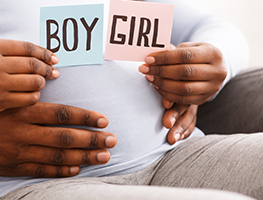How is the due date calculated?
When conception has occurred naturally, estimating the baby’s due date is generally done in the same way around the world. A pregnancy calculator provides a good estimate of the due date based on a mother’s menstrual history, rather than when actual conception has occurred. The baby’s gestational age is estimated by calculating the first day of the mother’s last normal menstrual period and then adding 40 weeks to this date. This is dependent on a mother having a normal 28 day cycle, assuming that conception occurred around 14 days after the start of her period.
However, many women have menstrual cycles which are a few days longer or shorter than this. This is why it is important to take individual factors into account when estimating the baby’s due date.
If a woman has undergone IVF, it is easier to predict the baby’s due date as certain factors become clearer:
-
When fertilisation occurred
-
Exactly when the embryo was implanted into the womb.
-
The rate of the embryo’s development
Blood tests measuring a mother’s hormonal levels could serve as another way to estimate the stage of her pregnancy.
Who’s counting in anyway?
Typically, a pregnancy lasts somewhere between 38 and 42 weeks, which is why 40 weeks (280 days) is seen as the norm. Interestingly, although most think that pregnancy lasts for 9 months, it really is closer to 10 calendar months. This is because most soon-to-be mothers start counting the weeks of pregnancy from the time of the last period, rather than two weeks later when conception is most likely to have occurred.
It is also usual practice to refer to the due dates as the Estimated Date of Confinement (EDC), or the Estimated Date of Delivery (EDD).
It’s important to remember that every mother is different and her baby’s development towards maturity is dependent on lots of factors, not just calendar days.
Another way of estimating a baby’s due date is to count back three months from the first day of the last normal period and then add seven days to this. For example, if a mother’s period started on December 1st, then three months back is September 1st + 7 days = due date of September 8th.
I already know when I conceived…
Sometimes it is possible to estimate the due date based on the conception date if intercourse has been infrequent. In some relationships, a couple’s physical proximity, let alone their intercourse habits are sporadic and irregular.
This is why being able to pinpoint exactly when conception occurred with more certainty can be easier for some couples. But again, date-based calculations are not exact and at best, should be seen as a “guesstimate”.
But I’m sure I know when I ovulated!
While it is true that many women are acutely tuned into their body’s ovulation cycle, being so sure about when they conceived is still less than exact.
Ovulation and conception don’t occur at the same time. Conception doesn’t happen immediately after having intercourse, either. Incredibly, sperm can live for up to five days, while the egg has a short, sharp period when fertilisation can occur. Fertilisation is painless, microscopic and occurs silently within the fallopian tubes. It is completely out of the mother’s conscious control; however, some women are absolutely certain they were aware of the moment when an embryo embedded itself in their womb.
Fertilisation usually happens within a small window of time, 12-24 hours after ovulation, when the egg is viable and capable of being fertilised. Most women conceive within 11 to 21 days after the first day of their last period. If a woman has been charting her cycles, taking her temperature and is fairly confident that she knows when she has ovulated, then estimating when fertilisation occurred can be much easier.
What is the Luteal Phase?
The Luteal Phase is an important concept to understand when trying to conceive. This is the phase of your menstrual cycle which begins after you have ovulated and lasts until:
-
Pregnancy occurs OR
-
There is a breakdown in the corpus luteum and the period starts.
The typical length for of the Luteal Phase is around 10 to 16 days - around 14 days in most cases.
-
If you normally have a 28 day cycle, you are likely to ovulate on Day 14;
-
If you have a 30 day cycle, you are likely to ovulate on Day 16.
Other ways to estimate the due date
-
Ultrasound
This is an accurate means of checking the baby’s growth and size. A vaginal ultrasound can be more precise than an abdominal ultrasound.
-
The baby’s growth
This is not always the most accurate measurement. Some babies are large, some small – there is no “one-size-fits-all” when it comes the pregnancy.
-
Examining a mother’s abdomen and comparing the size of her womb with classic size markers
For example:
-
By the 12th week, the womb is generally starting to lift out of the bony pelvis and can be felt just above the symphysis pubis.
-
By the 20th week, the womb can be felt at the level of the mother’s umbilicus.
Again, these measurements are general guides, and cannot be seen as exact measurement.



















